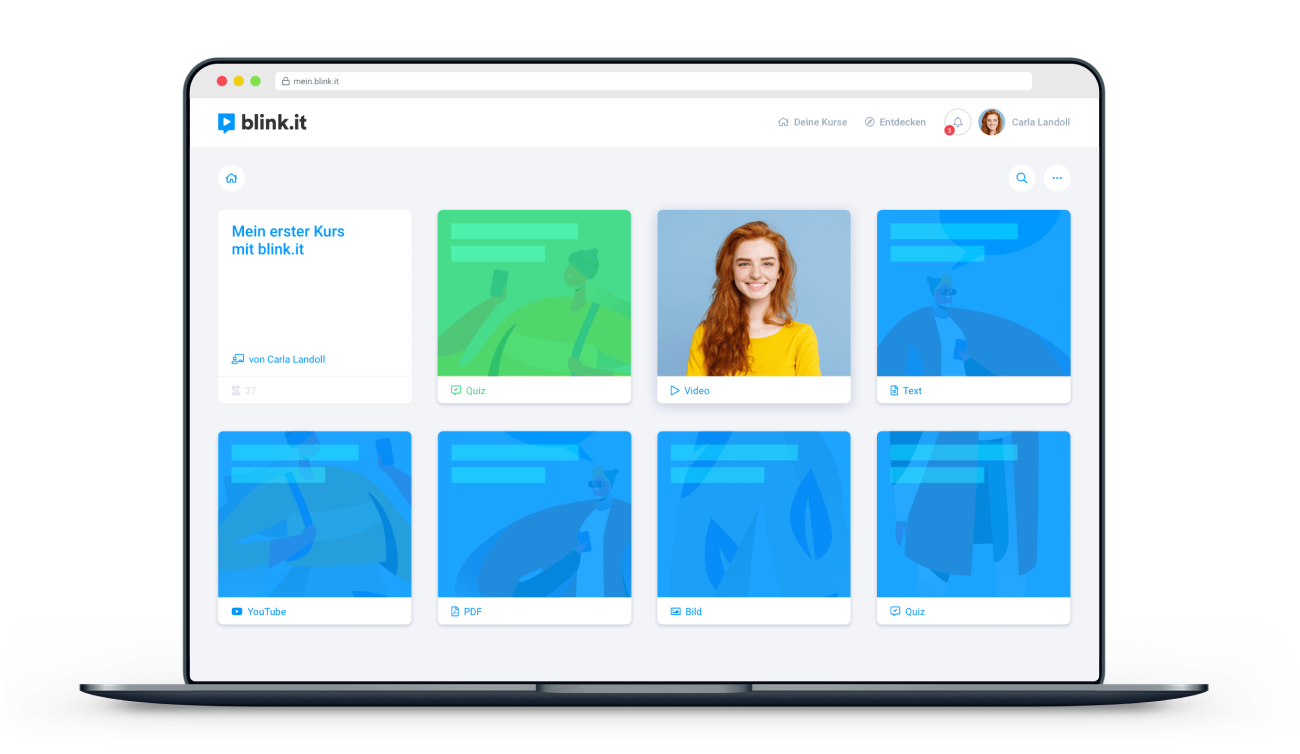"With blink.it, do I need an additional authoring tool to create my learning content?" We hear this question all the time. So we want to show you why blink.it is more than a classic LMS. Learn all about the features and why you don't need an additional authoring tool anymore, thanks to blink.it.
LMS and authoring tool - how do they differ?
In the field of eLearning, the question always arises: LMS, authoring tool or another eLearning software? Especially when eLearning is to be newly introduced in the company, it is not always clear to L&D professionals what kind of tool is actually being sought.

What you choose depends on your needs. If you are currently looking for a suitable eLearning tool, you should know the difference between an LMS and an authoring tool:
Main functions of an LMS
- A Learning Management System helps you manage and distribute eLearning courses to your students.
- Organization: An LMS not only helps you plan and structure your eLearning, you can also send course invitations and reminders.
- Administration: In the LMS, you can track the activities and learning progress of your participants and send reminders when necessary.
- Evaluation: For each learner, you can view the completion status of your learners and send reminders when needed.
- Integration: Most LMSs easily integrate with video conferencing tools and other applications from Google or Office.
- Assessment: Thanks to certain assessment functions such as quizzes or reporting, you can evaluate the learning success of your participants.
Main functions of an authoring tool
- Authoring tools help you create varied content and entire eLearning courses.
- Content: You can use images, text, videos, and interactive elements to create eLearning for a variety of topics.
- Templates: Most authoring tools allow you to create your own templates and reuse them for different learning content.
- Administration: Authoring tools also offer administration options, but these mainly relate to your learning content and resources.
- Interaction: Digital learning thrives on sharing, which is why most tools have special quiz or polling features for course design.
- Digitization: To leverage existing offline content in eLearning, many authoring tools offer special features for digitizing materials.
Important: You may need both an LMS and an authoring tool. This depends on the particular tool: Some LMSs have no content creation capabilities at all and require an authoring tool. Likewise, there are authoring tools that do not have participant management and must be integrated into an LMS. Therefore, when choosing tools, pay attention to whether they depend on each other or, like blink.it, work "stand alone."
That's why blink.it is both: The perfect mix of LMS and authoring tool
We often describe blink.it as "LMS light". This does not mean that blink.it has fewer features than a classic LMS. On the contrary: blink.it offers everything you need and still remains clearly structured! Pure LMS are often "spaceships" with a multitude of functions that you don't need in everyday life. With blink.it the rule is "as much as necessary, as little as possible."
With blink.it you have an authoring tool and LMS in one. To clarify what we mean by this, we have created an overview: In the table you can see all blink.it features summarized, divided into LMS and authoring tool features:
blink.it LMS features |
blink.it authoring tool features |
|
Participant management
|
Content creation
|
|
Learning support
|
Interaction
|
|
Evaluation
|
Communication
|
|
Technology
|
Flexibility
|
|
SCORM integration
|
Bonus function: selling
|
Example: blink.it LMS & authoring tool functions are this practical
Of course, we don't just talk about the many features of blink.it – we’ll show you proof. I'm going to introduce you to my six favorite features of the blink.it platform, from content creation to course management.
Want to get to know blink.it from a participant's perspective? Then sign up now for our demo course on "Personal Productivity" and take a look around at your leisure:
1. Create your eLearning course directly in the learning platform
Create your own eLearning with blink.it in just a few clicks. Thanks to the clearly arranged tile design, you have all contents directly in view.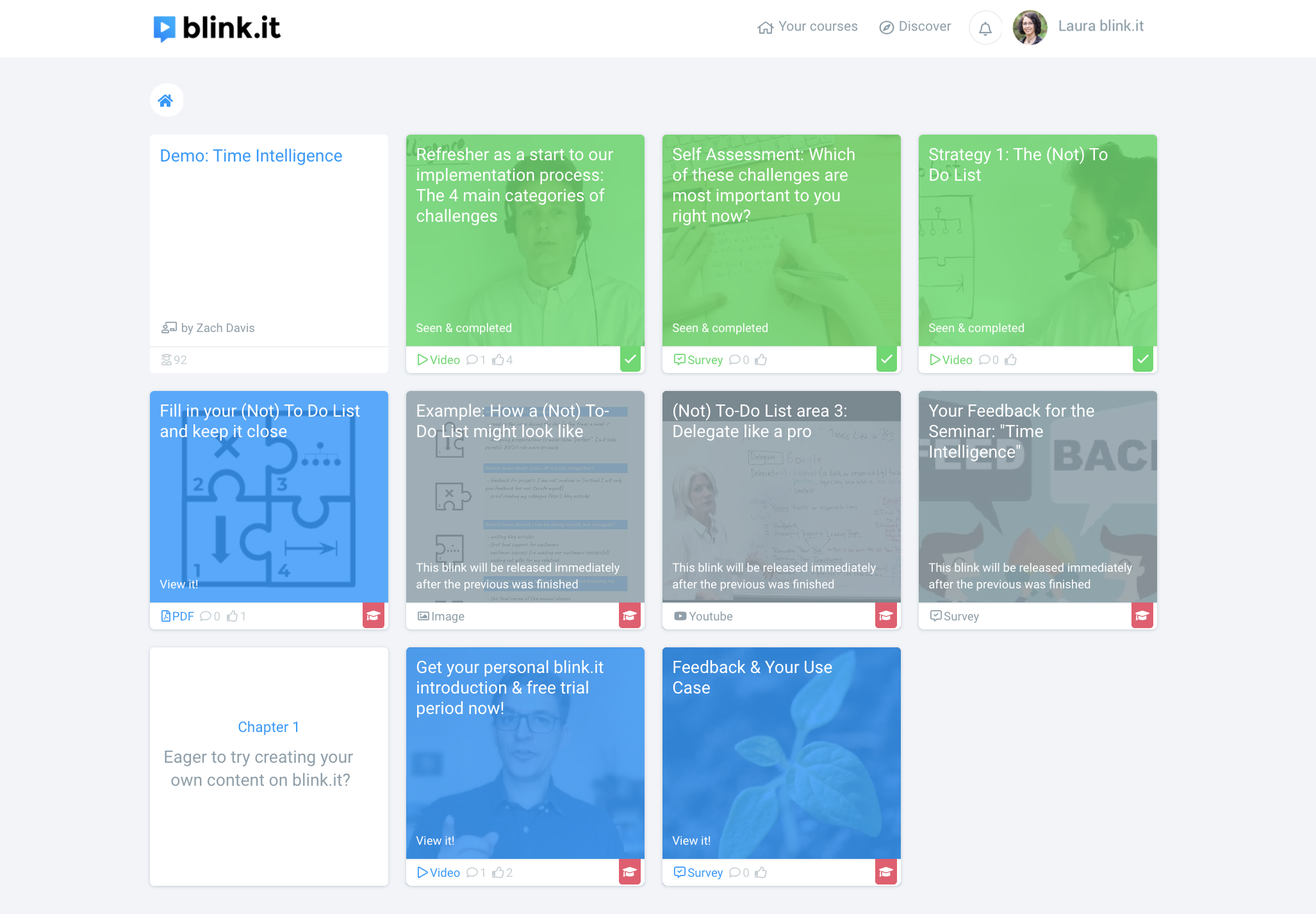
blink.it course overview: Create your own course directly in the learning platform // Source: blink.it
2. Choose varied media for your eLearning course
Use different media that fit your learning content. This makes eLearning fun and more effective at the same time.
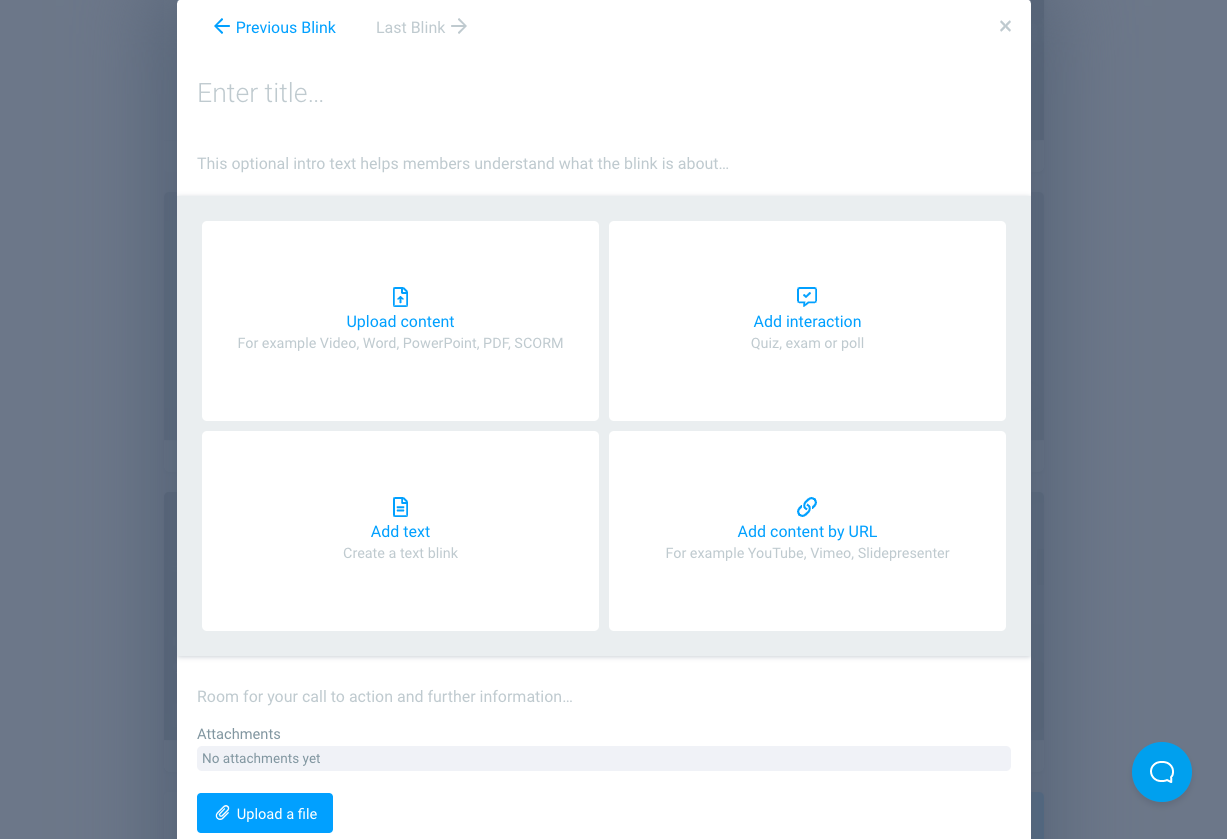
Design your eLearning with a mix of videos, images, texts and links // Source: blink.it
3. Send your participants regular emails directly from your course
Contact the participants of your eLearning regularly by mail. Conveniently welcome your participants by mail before the course starts and regularly remind them to continue working on the course.
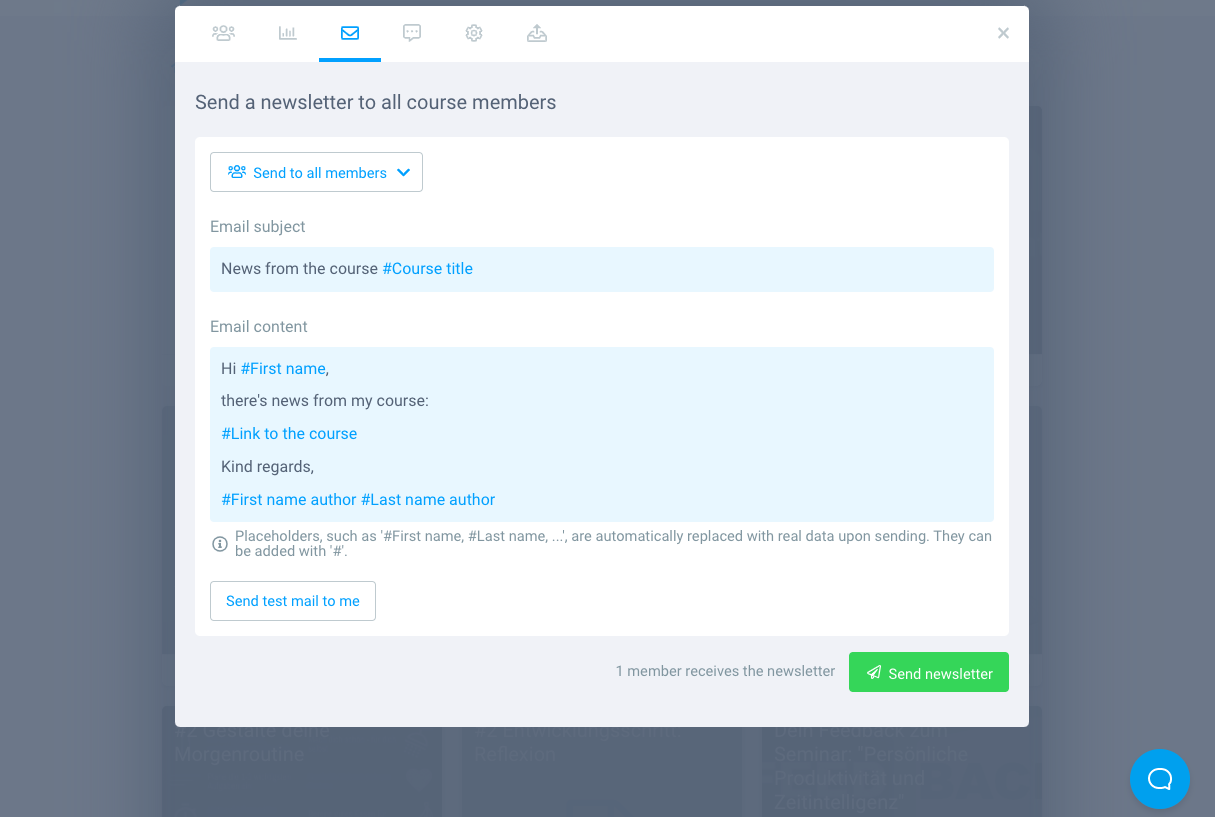
Send regular targeted messages as a reminder and keep in touch with your participants. // Source: blink.it
4. Check statistics to gauge how far participants are with the course
Trust is good, control is sometimes better. Check your course stats regularly to see how far along your participants are with their learning. This way you know when your next reminder email should be sent.
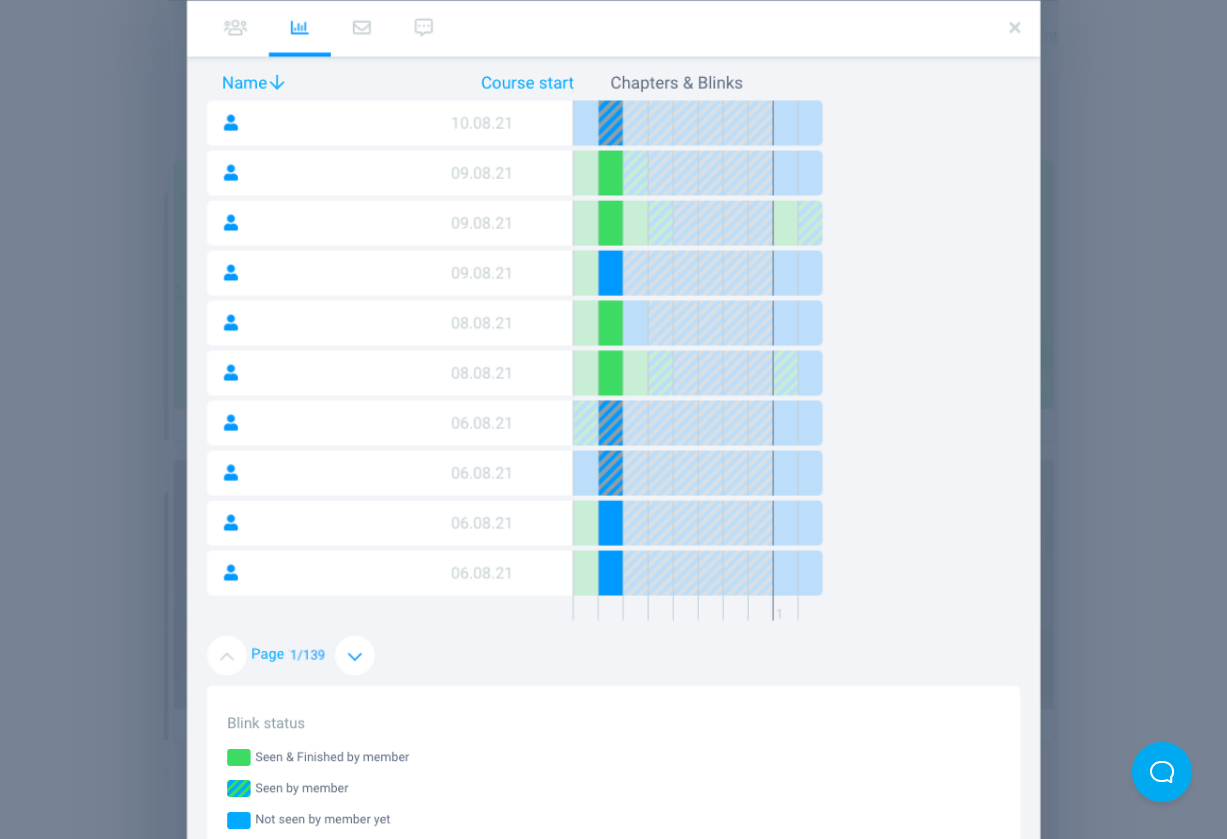
Keep an eye on the learning progress of your course participants. // Source: blink.it
5. Encourage exchange between participants and answer questions
Knowledge exchange and discussions are especially important in eLearning. Ask and answer questions under the individual learning contents. You can upload files or rate contributions with a thumbs up or down.
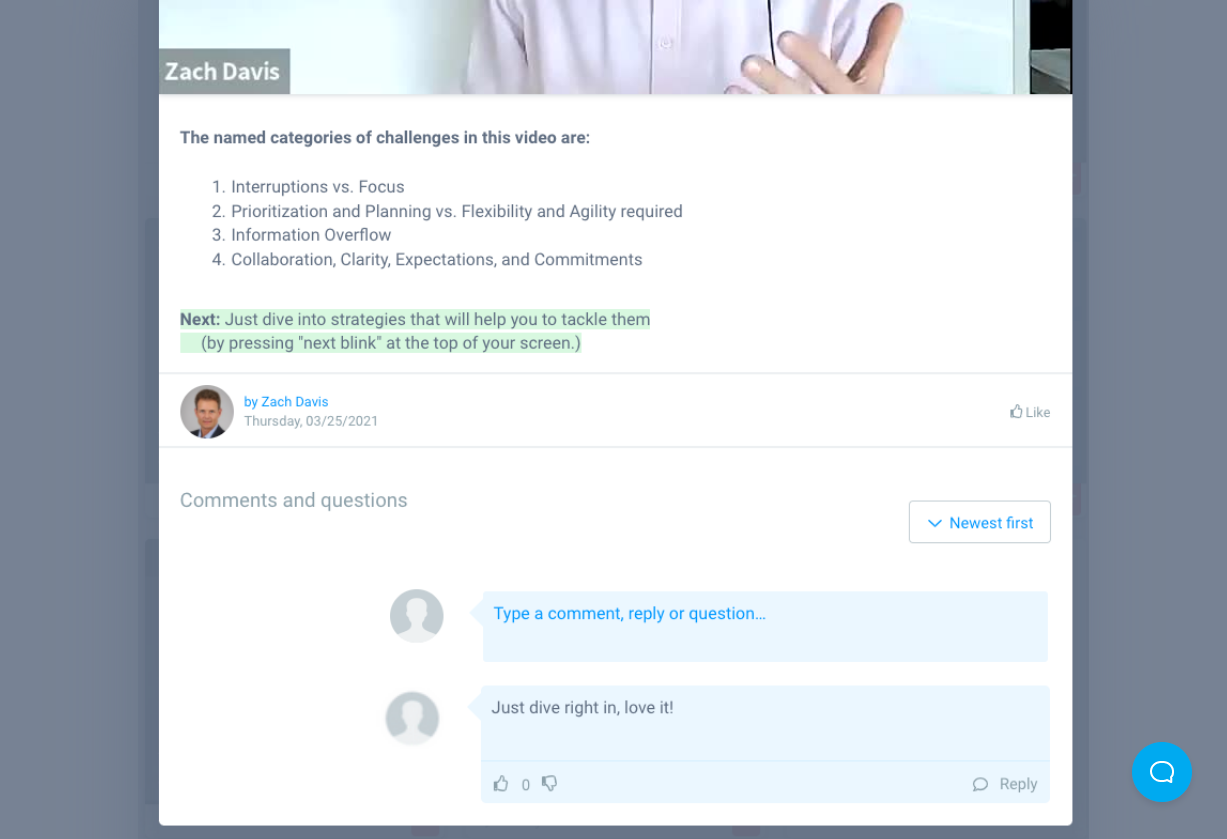
Under learning content there is the possibility to exchange ideas in the comments. // Source: blink.it
6. Conclude learning units or your whole course with a test
There are many types of questions and settings that enable you to test the knowledge of your participants. Tests, quizzes or surveys – you can also create them to be anonymous, like in this example.
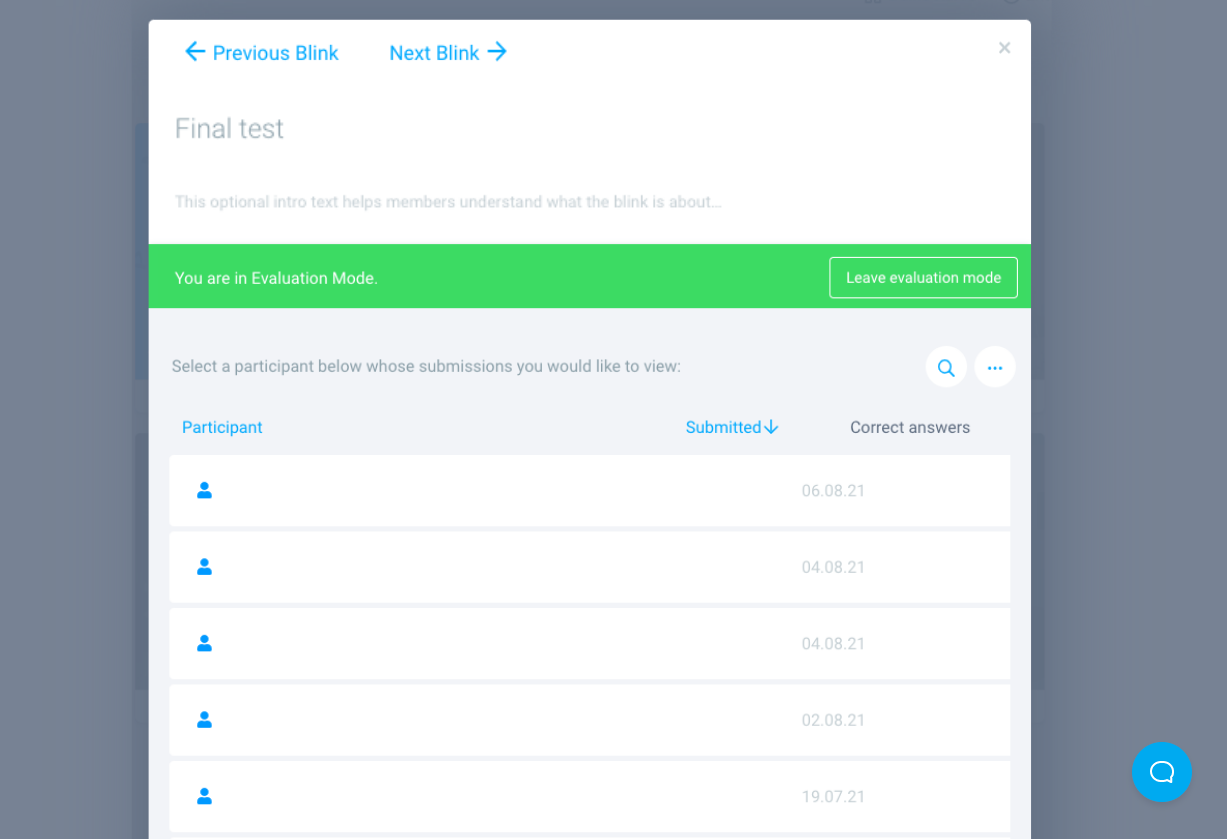
Evaluate your tests and quizzes to assess your students. // Source: blink.it
Are these insights compelling – you want to learn more about blink.it? Then book a free demo now and get to know the advantages for your own uses. Test the platform directly in the demo course – seen here in the examples – without obligation and from a participant's point of view. Have fun!








